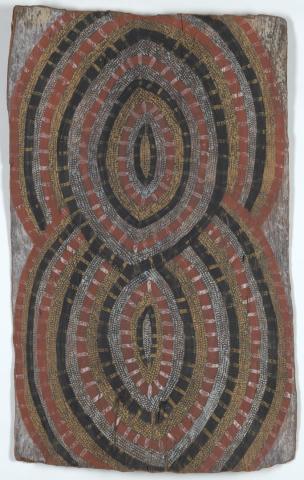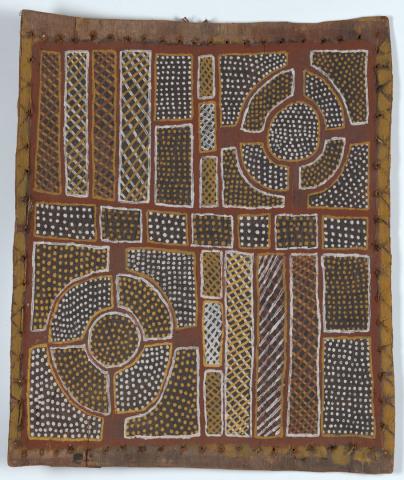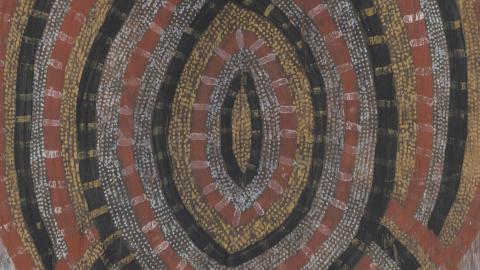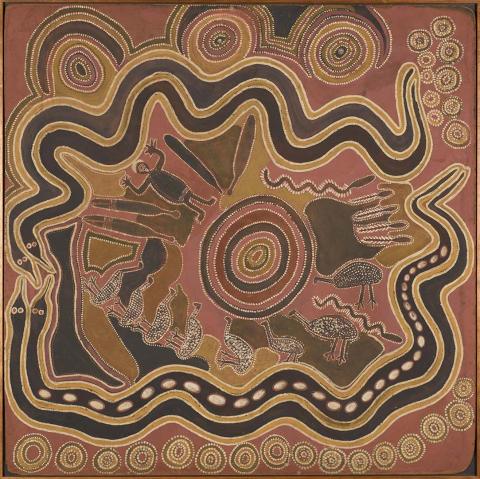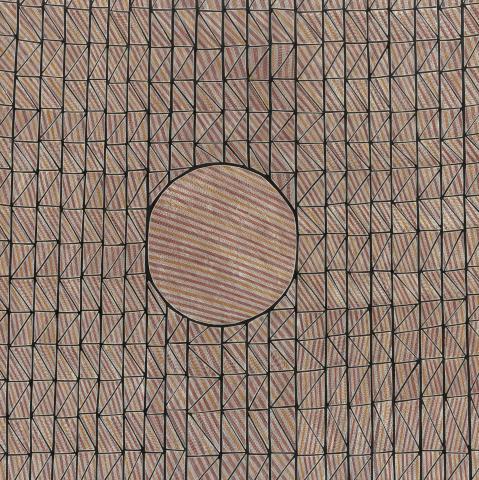Tiwi Islands
The Tiwi Islands in the Northern Territory are situated 80km north of Darwin, adjoining the Timor Sea. They are comprised of Melville and Bathurst Islands and nine smaller uninhabited islands, with a combined area of 8320 square kilometres.
Today, Tiwi artists produce fine canvas paintings and small carvings and have a long, ongoing reputation for exquisite printed textiles. They are also renowned for their Pukumani or Tutini poles. Unique to the Tiwi Islands, the massive solid log sculptures are carved from local ironwood, which is excessively heavy and difficult to work. They are connected to creation stories that narrate how death (previously unknown to the Tiwi) came to be a part of life in the Pulinari (creation times).
Pukumani is performed in Tiwi death and mourning ceremonies to ensure a safe journey for the spirit from the natural world to the ancestral, and life after death. The poles are monuments to the importance of the deceased, with larger and more elaborate poles or groups denoting a person’s higher standing. They are left at the burial site to weather through the seasons and can be seen in Tiwi communities in various stages of decay.
Bark paintings Untitled (Pukumani story) c.1960 by an unnamed artist and The death of the first ancestor undated by Stanislaus Puruntatameri (1906–87) are two works that take inspiration from the aesthetic sensibilities of the Pukumani. Puruntatameri’s powerful work, incorporating the burial poles and their patterning, provides an abstract map of the Tiwi Islands, including the land and sea, as well as the phases of the moon and the resting place of the first ancestor.

All-bin-mix-up c.1957
- MUNGATOPI, Deaf Tommy - Creator

Tunga (bark basket) star and moon design 2006
- TIPILOURA, Gerard - Tunga maker
- COOK, Timothy - Artist
